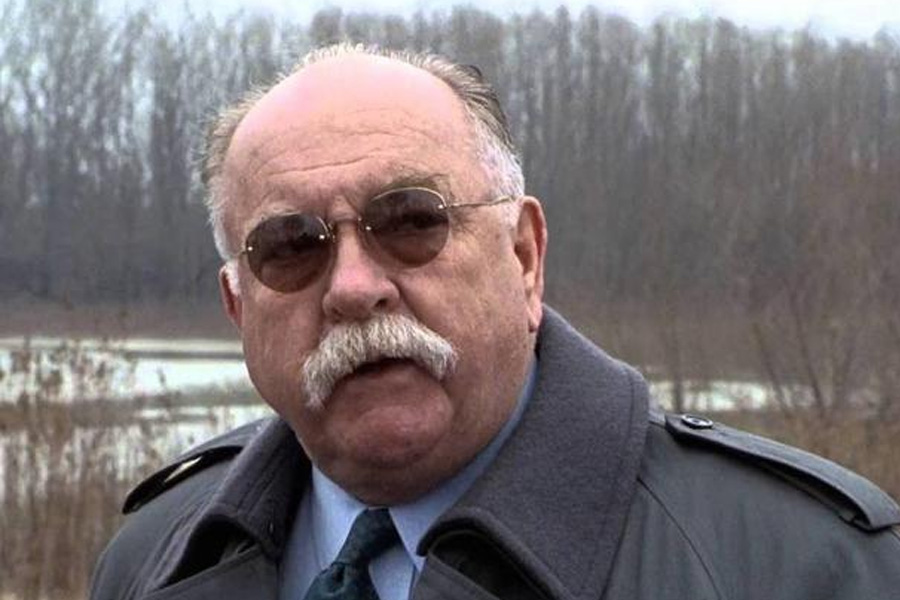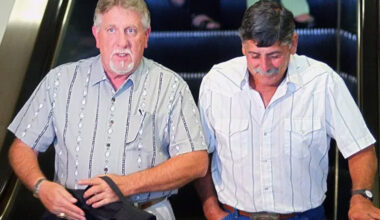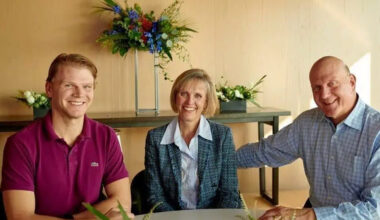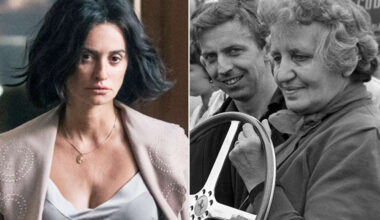Basic Information
| Field | Details |
|---|---|
| Birth Name | Anthony Wilford Brimley |
| Professional Name | Wilford Brimley |
| Also Referred To As | Walter Brimley |
| Birth | September 27, 1934 — Salt Lake City, Utah, USA |
| Death | August 1, 2020 — St. George, Utah, USA (age 85) |
| Parents | Lola (née Nelson); Wilford Brimley Sr. (real estate) |
| Ancestry | English, Scottish, Danish, German, Swiss, Welsh |
| Faith | The Church of Jesus Christ of Latter-day Saints |
| Military Service | U.S. Marine Corps, 1953–1956; Korean War era, sergeant; Aleutian Islands |
| Occupations | Actor, singer, stuntman, rancher, blacksmith, horse trainer |
| Years Active | Late 1960s–2017 |
| Marriages | Lynne Bagley (m. 1956–2000); Beverly Berry (m. 2007–2020) |
| Children | Four sons: James Charles, John Michael, William Carmen, Lawrence Dean |
| Residences | Utah; Wyoming (Greybull); California (youth) |
| Notable Works | The Waltons (1974–1977), The Thing (1982), Tender Mercies (1983), The Natural (1984), Cocoon (1985), Our House (1986–1988), The Firm (1993), In & Out (1997) |
| Commercials | Quaker Oats (1987–1997); Liberty Medical diabetes awareness (2000s–2010s) |
| Awards/Recognition | Golden Boot Award (2005); honored by American Diabetes Association (2008) |
| Estimated Net Worth at Death | Approximately $8 million |
| Philanthropy | Co-founder, Hands Across the Saddle (HATS), 2009 |
Early Roots and Faith
Born in Salt Lake City to a working-class family, Walter Brimley—known professionally as Wilford—grew up with the grit of the Intermountain West in his bones. When his family moved to Santa Monica around 1940, he caught a glimpse of Hollywood’s glow but chose work over glamor, leaving school at 14 to ride fence lines and break horses across Arizona, Idaho, and Nevada. His Mormon faith grounded him early and thoroughly, imparting the steadiness that later defined his screen presence.
By 18, he wore a Marine uniform. Stationed in the Aleutian Islands during the Korean War period and rising to sergeant, he learned discipline amid fog, wind, and isolation—an apprenticeship in endurance that would echo through his roles.
From Saddles to Sets: An Accidental Actor
After the Corps, he made a living with his hands: blacksmith, horse trainer, even a bodyguard stint. Hollywood found him one saddle at a time. In the late 1960s he showed up on Western sets as a riding extra and stuntman—his horsemanship his calling card. Speaking roles followed in the 1970s, with a pivotal turn in the late decade that led to a steady climb.
He wasn’t classically trained, and it didn’t matter. He acted like people he knew—plainspoken, thoughtful, skeptical of nonsense. That honesty read on camera like a map reads the land.
Breakthroughs and the Art of Playing Older
The late 1970s and early 1980s reshaped his career. He appeared in The China Syndrome (1979) and became a face audiences trusted. In The Thing (1982), he brought human drama to icy paranoia. Tender Mercies (1983) showcased his knack for gentle authority. Then came a one-two punch that stuck: Pop Fisher in The Natural (1984) and Ben Luckett in Cocoon (1985). Though in his 40s and 50s, makeup (and aura) let him inhabit wizened elders with ease; he seemed to have been born weathered, with a baritone like a front-porch floorboard.
Television embraced him, too. The Waltons (1974–1977) gave him early visibility, while Our House (1986–1988) made him the nation’s grandpa—kind, stubborn, dependable. He’d later bolster films like The Firm (1993) and In & Out (1997), and keep working into his 80s, including Timber the Treasure Dog (2016) and I Believe (2017).
Spokesman, Advocate, Meme
Diagnosed with Type 2 diabetes in 1979, he became a plainspoken advocate. From 1987 to 1997 he was the warm, no-nonsense face of Quaker Oats—“It’s the right thing to do.” In the 2000s and 2010s, he fronted Liberty Medical spots about diabetes management. One folksy mispronunciation—“diabeetus”—turned him into an unlikely internet folk hero, a meme that mixed chuckles with a nudge toward awareness.
Recognition followed where it fit. He received the Golden Boot Award in 2005 for contributions to the Western genre, and the American Diabetes Association honored him in 2008 for education efforts. It was never about trophies; it was about being useful.
The Family Circle
For all his on-screen ubiquity, Brimley guarded his private life. He married Lynne Bagley on July 6, 1956. Their 44-year union produced four sons—James Charles, John Michael, William Carmen, and Lawrence Dean—and weathered lean years, long shoots, and ranch chores. Lynne passed away in 2000, a loss he felt deeply.
On October 31, 2007, he married Beverly Berry, a fellow horse lover who shared his faith and rural rhythms. Together, they split time between Santa Clara, Utah, and Greybull, Wyoming. In 2009 they co-founded Hands Across the Saddle (HATS), a nonprofit serving the Bighorn Basin community, with a special emphasis on helping at-risk youth through equestrian-centered support.
Family Snapshot
| Family Member | Relationship | Notes |
|---|---|---|
| Lola (Nelson) Brimley | Mother | Homemaker; influenced his family-first values |
| Wilford Brimley Sr. | Father | Real estate; instilled resilience |
| Lynne Bagley | First wife (1956–2000) | Mother of his four sons; died 2000 |
| Beverly Berry | Second wife (2007–2020) | Co-founder of HATS; no children together |
| James Charles | Son | Private life; low public profile |
| John Michael | Son | Private life; equestrian interests suggested |
| William Carmen | Son | Private life; possible HATS involvement |
| Lawrence Dean | Son | Most publicly referenced; shared love of horses |
He kept his circle tight and his priorities simple: faith, family, horses, and work.
Milestones That Mattered
| Year | Event |
|---|---|
| 1934 | Born in Salt Lake City, Utah |
| 1940 | Family relocates to Santa Monica, California |
| 1948 | Leaves high school at 14; begins ranch work |
| 1953–1956 | U.S. Marine Corps service; sergeant; Aleutian Islands |
| 1956 | Marries Lynne Bagley |
| Late 1960s | Begins Hollywood work as riding extra/stuntman |
| 1974–1977 | The Waltons recurring role |
| 1979 | Type 2 diabetes diagnosis; roles in major films |
| 1982–1985 | The Thing, Tender Mercies, The Natural, Cocoon |
| 1986–1988 | Stars in TV series Our House |
| 1987–1997 | Quaker Oats spokesman |
| 1993 | The Firm supporting role |
| 2000 | Lynne Bagley Brimley dies |
| 2005 | Golden Boot Award |
| 2007 | Marries Beverly Berry |
| 2008 | Honored by American Diabetes Association |
| 2009 | Co-founds HATS nonprofit |
| 2016–2017 | Late-career roles; final film I Believe |
| 2020 | Passes away at 85 after kidney complications |
Dollars, Dust, and Durability
He often said he wasn’t chasing fame; he was chasing a living. Early on, he earned modestly—by his account, even the late 1970s could be lean. Residuals, steady roles, and a decade of national commercials changed that calculus. By 2020, his estate was estimated near $8 million: a testament to consistent work, not splashy headlines. Ranch properties in Utah and Wyoming stayed central—places where he could swap a script for a saddle.
Health, Final Years, and Farewell
Diabetes shaped his routines from 1979 onward. He turned experience into advocacy, urging diet, monitoring, and common sense. In June 2020, kidney trouble led to dialysis; on August 1, he died in St. George, Utah, at 85. The funeral was private, the way he preferred his personal life—quiet, family close, no fuss.
Legacy and Philanthropy
Brimley’s legacy is paradoxical and perfectly American. He was the irreplaceable character actor who made truth look easy, the commercial spokesman who felt like your neighbor, the meme that nudged the world toward health literacy. With Beverly, he put his name behind Hands Across the Saddle, using horses and heart to steady those in need. It wasn’t showy charity. It was help, delivered like a firm handshake.
FAQ
Was “Walter Brimley” his real name?
He was born Anthony Wilford Brimley and worked professionally as Wilford Brimley; “Walter” appears as an alternate usage in some references.
How many children did he have?
He had four sons with his first wife, Lynne Bagley: James Charles, John Michael, William Carmen, and Lawrence Dean.
What was his most famous role?
Audiences most often cite The Natural (1984), Cocoon (1985), The Thing (1982), and the TV series Our House (1986–1988).
Did he really serve in the military?
Yes, he served in the U.S. Marine Corps from 1953 to 1956, attaining the rank of sergeant while stationed in the Aleutian Islands.
Why is he linked to “diabeetus” memes?
His Liberty Medical diabetes ads made his folksy pronunciation famous, turning into a long-running internet meme.
Was he a trained actor?
No; he began as a stunt rider and extra, drawing on real-life experience to craft authentic performances.
What charity did he support?
He co-founded Hands Across the Saddle (HATS) in 2009 with his wife Beverly to support at-risk youth, often through equestrian-centered programs.
How old was he in Cocoon?
Cocoon released in 1985 when he was 50, though makeup helped him convincingly play a much older character.
Did he win major awards?
He received the Golden Boot Award in 2005 and was honored by the American Diabetes Association in 2008 for his education efforts.
What was his net worth?
At the time of his death in 2020, his net worth was estimated at approximately $8 million.



